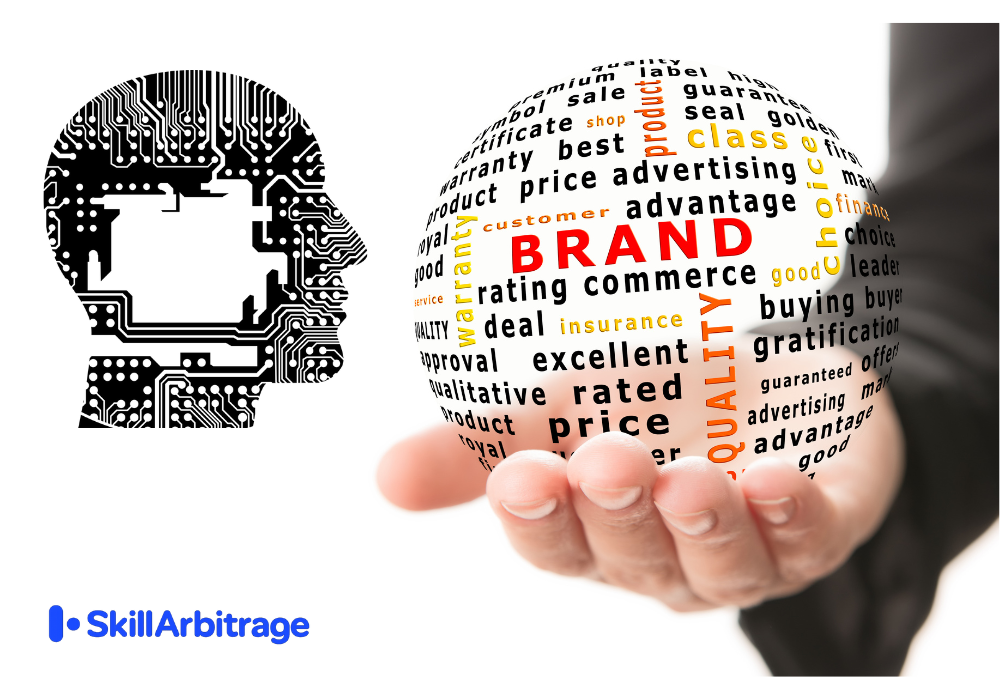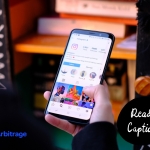This blog tells you how to craft powerful, high-impact brand taglines using AI. It would be useful for content writers, copywriters, and small business owners who want to generate unforgettable taglines that capture attention, spark emotion, and remain in the public memory forever.
Table of Contents
Introduction
“Kuch maza nahi aa raha hai.” There they were, the dreaded four words that I have been dreading from the client’s mouth.
He had asked me for some taglines for his brand, and I complied, but after presenting 25 options and going through three rounds, we were still stuck.
As a content writer, how many times have you stared at a blank document, desperately trying to craft the perfect tagline for a client? Hours spent brainstorming, only to end up with something that feels… meh. Sound familiar?
Here’s the thing: traditional tagline brainstorming is painfully slow and frustratingly hit-or-miss. You might spend an entire afternoon cycling through mediocre options, hoping something magical will eventually emerge from your creative well.
Yet taglines are crucial for brand communication. They enhance brand recognition, create an emotional connection with consumers, and help differentiate a company from its competitors.
But what if I told you there’s a way to supercharge your creativity and deliver dozens of compelling tagline ideas in seconds? AI has become the ultimate creative super junior at work, and for content writers working in India’s incredibly diverse market, blending AI with authentic brand voice is nothing short of a game-changer.
This guide will walk you through a fast, repeatable process to craft memorable taglines that actually resonate with your target audience.
By the end, you’ll be creating taglines that stick in just 10 minutes, not hours. Ready to transform your tagline creation process? Let’s dive in.
What makes a brand tagline unforgettable
Before we jump into the AI magic, let’s nail down what separates forgettable taglines from the ones that become part of our daily vocabulary. Think about “Just Do It,” “I’m Lovin’ It,” or even India’s beloved “Taste the Thunder.” What makes these lines legendary?
The secret lies in three core elements that work together like a perfectly choreographed dance:
Emotion is your first ingredient. Great taglines don’t just describe, they make people feel something. They spark trust, ignite joy, or fuel aspiration. When Fevicol says “Jor Lagake Haisha,” it’s not just about strength; it’s about reliability you can count on when everything else falls apart.
Clarity comes next. Your tagline needs to define both the brand’s audience and its unique edge in crystal-clear terms. No one should have to decode what you’re trying to say. If your grandmother can’t understand it immediately, it’s probably too clever for its own good.
Brevity seals the deal. Keep it under seven words, make it rhythmic, and ensure it rolls off the tongue naturally. The human brain loves patterns and rhythm – use this to your advantage.
Here’s where it gets interesting for us content writers working in the Indian market: adding that local resonance can transform a good tagline into an unforgettable one. Think “Ghar se Growth” for a startup, or incorporating familiar cultural references that instantly connect with your audience’s experiences.
The key is blending emotion and positioning for instant impact. When these elements work together, you create something that doesn’t just describe your brand – it becomes part of your audience’s mental landscape.
Why AI is your creative co-pilot
Let’s address the elephant in the room: writer’s block.
We’ve all been there, staring at a cursor that seems to mock our creative abilities. This is where AI becomes your secret weapon, breaking through those mental barriers with rapid-fire ideation.
AI doesn’t replace your creativity, it amplifies it. Think of it as having a brainstorming partner who never gets tired, never runs out of ideas, and can explore angles you might never have considered. It tailors tone, explores synonyms, and suggests cultural angles that might not have occurred to you in your first (or fifth) attempt.
Here’s a real example that’ll blow your mind: A fellow content writer recently used ChatGPT to generate 20 taglines for a chai brand in just one minute. Among the output was “Pure Bliss in Every Sip”, which the client loved and eventually adopted. What would have taken days of traditional brainstorming happened in seconds.
The beauty of AI lies in its ability to save time while amplifying your creative spark. It’s not about being lazy; it’s about being strategic. You can spend your mental energy refining and perfecting rather than generating from scratch.
AI also helps you explore territories you might unconsciously avoid. Maybe you tend to write in a certain style, or you have blind spots when it comes to certain emotional angles. AI pushes you out of your comfort zone, suggesting approaches that feel fresh and unexpected.
Step-by-step workflow for writing brand taglines
Now for the good stuff the actual process that’ll transform your tagline creation game. This workflow is battle-tested and designed to work whether you’re crafting taglines for a Mumbai startup or a Bangalore tech company.
Use the free version of ChatGPT and follow these simple steps to arrive and taglines that take minutes to write and seconds to get approved.
Step 1: Define brand core
Start by getting crystal clear on what the brand stands for. Use this prompt: “Summarize [Indian edtech brand]’s values in 3 words.”
For example, if you’re working with an educational technology company, you might get: “Empower, Educate, Excel.” These three words become your North Star, guiding every tagline decision that follows.
Don’t skip this step, it’s tempting to jump straight into tagline generation, but without a solid foundation, you’ll end up with options that sound good but don’t actually represent the brand’s essence, the primary purpose of a tagline.
Step 2: Choose emotional hook
This is where psychology meets creativity. Identify the primary emotion you want to evoke. Are you going for trust? Anticipation? Joy?
Try this prompt: “Suggest emotional angles for a [SaaS brand] focused on productivity.” The AI might suggest angles like relief (from chaos), confidence (in organization), or excitement (about achievement).
Pick one primary emotion and let it guide your tagline direction. Trying to evoke multiple emotions usually results in taglines that feel scattered and unfocused.
Step 3: Generate taglines
This is where the magic happens. Run multiple prompts to explore different creative territories:
Prompt 1: “Write 10 taglines for a [minimalist jewellery brand] evoking confidence.”
Prompt 2: “Rewrite this tagline like Nike or Amul.” (This helps you explore different brand personalities)
Prompt 3: “Create rhyming or punny taglines for a [kids’ snack brand].”
Test different styles: direct (“Get Results Fast”), metaphorical (“Your Success Story Starts Here”), or benefit-led (“Double Your Productivity Today”). Each style serves different brand personalities and audience preferences.
Don’t settle for the first set of options. Run variations, ask for alternatives, and push the AI to explore different angles. The goal is quantity first, and quality comes in the next step.
Step 4: Refine & polish
Now comes the human touch. Shortlist 3-5 taglines that feel most promising and start editing for brand voice.
Use prompts like: “Make this tagline more conversational for Indian Gen Z” or “Adjust this tagline to sound more premium and sophisticated.”
Here’s a recap of the process:
This is where your expertise as a content writer becomes invaluable. AI gives you the raw material, but you sculpt it into something that perfectly matches the brand’s personality and speaks directly to the target audience.
Filter with human instinct
Here’s where many content writers make a critical mistake: they assume AI output is ready to go.
Wrong.
Every AI-generated tagline needs to pass through your human filter, and here’s what to look for:
Relevance is non-negotiable. Does this tagline truly align with the brand and its target audience? A tagline that works for a luxury brand won’t work for a budget-friendly alternative, even if it sounds clever.
Originality matters more than ever in our crowded market. Check for clichés, overused phrases, or anything that sounds suspiciously similar to existing taglines. A quick Google search can save you from embarrassment later.
Stickiness is the ultimate test. Read each tagline aloud. Does it sound natural? Does it have a rhythm that makes it easy to remember? If you stumble over the words, your audience will too.
Use this checklist for every potential tagline:
- Does it spark the intended emotion?
- Is it unique and brand-aligned?
- Is it memorable after hearing it once?
Pro tip: Test your shortlisted taglines with colleagues or run informal social media polls. Sometimes an outside perspective reveals blind spots you’ve missed.
Taglines that hit the bull’s eye
Let’s look at some tagline examples that nail the formula:
Vegan Skincare: “Glow Kind, Live Kind.”
Why this works: It’s emotional (kindness), benefit-driven (glowing skin), and beautifully simple. The repetition of “kind” creates rhythm while reinforcing the brand’s values.
Indian Edtech: “Learn Today, Lead Tomorrow.”
Why this works: This tagline is pure gold for the Indian market. It’s aspirational (perfect for career-focused Indian youth), creates a clear progression, and uses alliteration for memorability. It speaks directly to the Indian mindset of education as a pathway to leadership.
Notice how each example balances emotion, clarity, and cultural fit.
They don’t just describe what the brand does – they paint a picture of who the customer becomes.
Tagline types & AI prompts
Different brands need different approaches. Here are the main tagline types and the AI prompts that generate them:
Benefit-Driven: “Write 10 taglines for a [fitness app] highlighting time-saving benefits.”
Perfect for practical, results-focused brands.
Visionary: “Create future-focused taglines for a [fintech app] for Indian millennials.”
Great for innovative brands that want to position themselves as forward-thinking.
Rhythmic/Punny: “Write witty taglines for a [chai brand] with Indian cultural references.”
Ideal for brands that want to be memorable and approachable.
Challenge-Based: “Craft question-based taglines for a [health brand] sparking curiosity.” Effective for brands entering competitive markets where you need to disrupt thinking.
Here’s a recap of the tagline approaches with the specific prompts:
Choose your type based on brand goals and audience. Playful works for kids’ brands, bold works for startups, sophisticated works for luxury brands.
Avoid these pitfalls
Even with AI as your co-pilot, there are several traps that can derail your tagline creation:
Over-relying on AI’s first output is the biggest mistake. The first batch is rarely the best batch. Push for variations, alternatives, and different approaches.
Using generic or clichéd phrases makes your tagline forgettable. If it sounds like something every brand could use, it’s not specific enough.
Ignoring cultural fit is particularly dangerous in India’s diverse market. English-heavy taglines might not resonate with Hindi-speaking audiences, and vice versa so ensure that your tagline is relevant to the TG.
Skipping voice checks for tone mismatch can make even great taglines fall flat. A playful tagline won’t work for a serious financial services brand, no matter how clever it sounds.
Pro tip: Use tools like Grammarly to ensure conversational flow, and always test for cultural relevance with native speakers of your target language.
10-minute framework
Here’s your quick-reference framework for creating taglines under time pressure:
Minutes 1-2: Define brand voice and unique angle clearly.
Minutes 3: Pick one primary emotion and one key promise.
Minutes 4-7: Run three different AI prompts for diverse tagline options.
Minutes 8-9: Shortlist 3-5 favorites and edit for personality.
Minutes 10: Quick validation via feedback or gut check.
Save your best-performing prompts in Notion or your preferred tool for future reuse. Building a library of effective prompts is like having a tagline creation superpower.
Conclusion
Taglines shape brand identity in ways that go far beyond marketing campaigns. They become the verbal shorthand for everything a brand represents, and in India’s incredibly crowded marketplace, a memorable tagline can be the difference between getting noticed and getting lost.
I used AI to generate the taglines my client eventually loved in the fifth round, and I have started to use it from the first round, subsequently.
Remember, AI is not enough on its own.
AI speeds up ideation and pushes creative boundaries, but your expertise, cultural understanding, and brand intuition are what transform good taglines into iconic ones. According to research, memorable taglines boost brand recall by 80%, which is the kind of impact that can transform a business.
The future of tagline creation isn’t human versus AI, it’s human plus AI. When you combine artificial intelligence’s rapid ideation capabilities with your deep understanding of brand voice, cultural nuances, and audience psychology, you create something neither could achieve alone.
Your next client project is the perfect opportunity to test this workflow. Start with the 10-minute framework, experiment with different prompt variations, and watch as your tagline creation process transforms from a time-consuming struggle into a true, efficient, creative collaboration.
In India’s dynamic and diverse market, where brands are constantly fighting for attention and mindshare, your AI-powered taglines will help your clients cut through the noise and create lasting connections with their audiences.
The tools are ready, the process is proven, and your creativity is the secret ingredient that makes it all work.
Ready to revolutionize your tagline game? Your next unforgettable tagline is just 10 minutes away.
FAQ
Q1: Can AI really generate effective brand taglines, or do they all sound generic?
Yes, AI can generate highly effective taglines if you give it the right prompts. The secret lies in feeding AI with your brand’s core values, audience pain points, tone of voice, and positioning. Instead of expecting perfect results in one shot, treat the AI like a brainstorming partner. Iterate, refine, and guide it with context, and you’ll get taglines that are both creative and strategic.
Q2: Which AI tools are best for writing brand taglines?
Some of the most effective tools include ChatGPT, Jasper, Copy.ai, and Writesonic. These tools allow you to customize tone, brand personality, and target audience. For more control, use ChatGPT with structured prompts, such as “Write a 5-word tagline for a premium organic skincare brand targeting Gen Z.” The key is knowing how to prompt the tool strategically.
Q3: What should I include in my AI prompt to get a high-impact tagline?
A strong prompt should include your brand’s:
- Core value or mission
- Target audience
- Product category or niche
- Tone of voice (e.g., witty, elegant, bold)
- Unique selling proposition (USP)
For example: “Write a bold, 4-word tagline for a sustainable denim brand targeting eco-conscious millennials. Highlight comfort and planet-friendliness.”
Q4: How do I know if an AI-generated tagline is truly ‘killer’?
Evaluate it using this checklist:
- Is it emotionally resonant?
- Is it short (ideally under 7 words)?
- Does it communicate a clear benefit or idea?
- Is it aligned with brand tone and audience mindset?
- Is it unique and memorable?
Test it by saying it aloud, checking for recall, or even running quick polls with your audience.
Q5: Can AI-generated taglines be legally protected or trademarked?
Yes, but with caution. If the tagline is truly unique and not a generic phrase, you can trademark it—even if AI helped create it. However, always run a legal search to ensure the line isn’t already in use. And since AI models generate based on existing data, it’s good practice to tweak and human-edit your final choice for originality before filing a trademark.







 Allow notifications
Allow notifications
